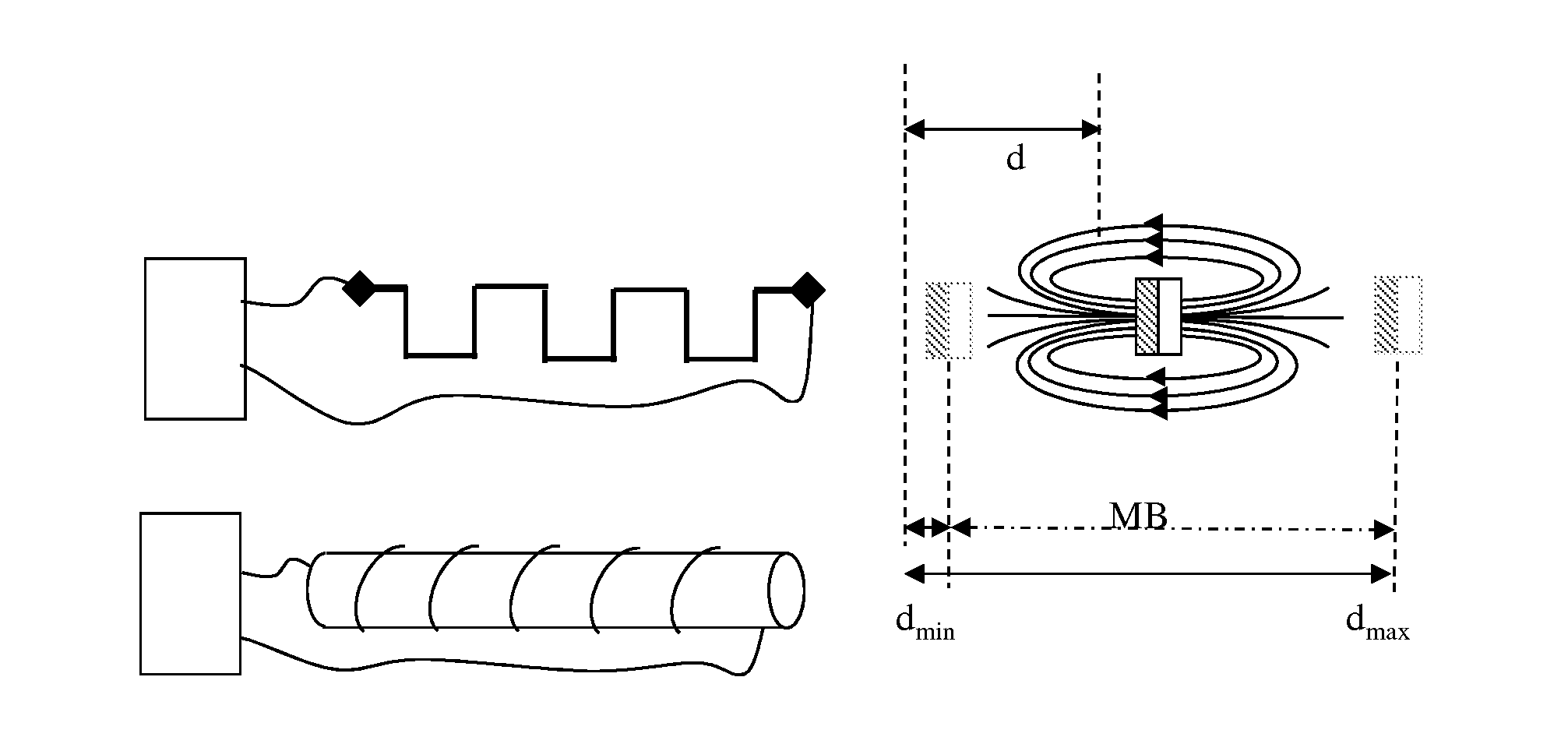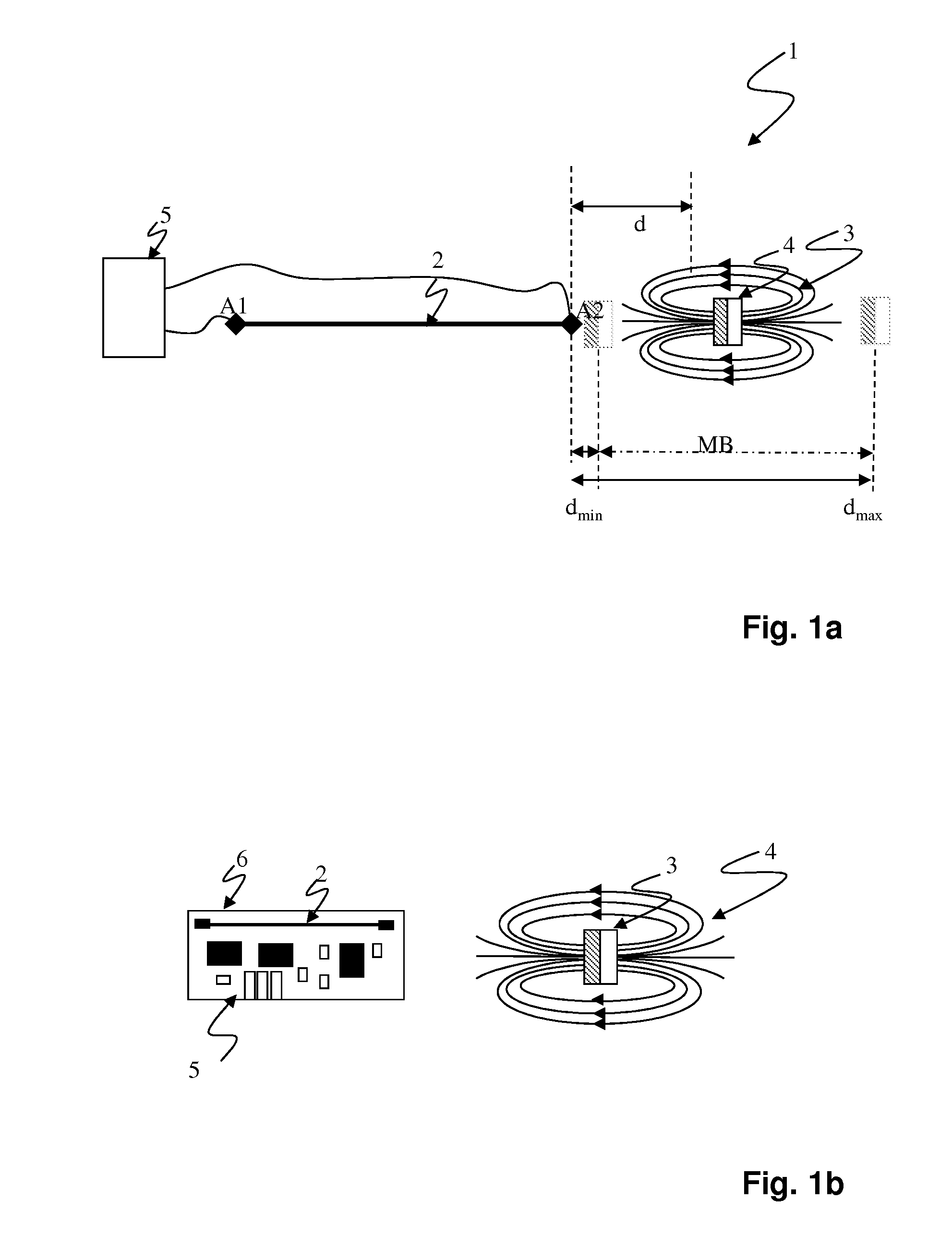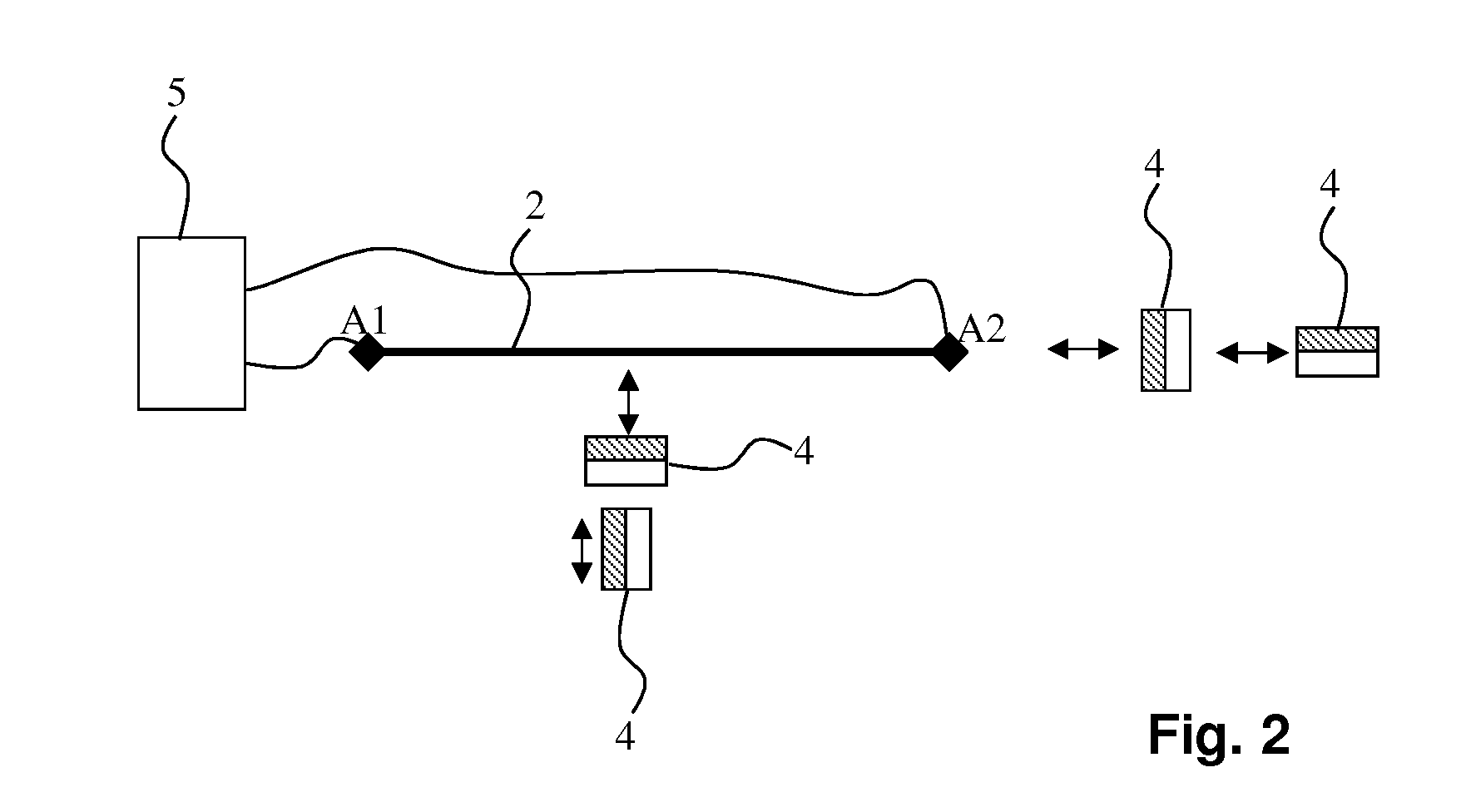Method and apparatus for sensing magnetic fields
a magnetic field and sensing device technology, applied in the direction of electrical/magnetically converting the output of the sensor, instruments, magnetic property measurements, etc., can solve the problems of high demands on the precision of printing or etching process, low detection accuracy, and disadvantages of the prior art sensing devi
- Summary
- Abstract
- Description
- Claims
- Application Information
AI Technical Summary
Benefits of technology
Problems solved by technology
Method used
Image
Examples
Embodiment Construction
[0058]The sensor according to the invention may comprise an oblong, soft-magnetic material connected to electronics and flown-through by alternating current. A magnet is allocated to the measuring object, which magnet changes the permeability in the soft-magnetic material depending on the position of the measuring object in reference to the sensor (see FIGS. 1a, 1b).
[0059]By changing the permeability, the complex impedance of the circuit changes due to the GMI-effect, which is formed by the soft-magnetic material. In the following, the soft-magnetic material is called the base element, for reasons of simplification. It is beneficial to evaluate the relative change in impedance.
[0060]The evaluation of the impedance using methods of prior art makes it possible to therefore determine the position of the measuring object in reference to the sensor. For example, the impedance can be measured by detecting the voltage drop over the wire, from which then conclusions can be drawn regarding t...
PUM
 Login to View More
Login to View More Abstract
Description
Claims
Application Information
 Login to View More
Login to View More - R&D
- Intellectual Property
- Life Sciences
- Materials
- Tech Scout
- Unparalleled Data Quality
- Higher Quality Content
- 60% Fewer Hallucinations
Browse by: Latest US Patents, China's latest patents, Technical Efficacy Thesaurus, Application Domain, Technology Topic, Popular Technical Reports.
© 2025 PatSnap. All rights reserved.Legal|Privacy policy|Modern Slavery Act Transparency Statement|Sitemap|About US| Contact US: help@patsnap.com



